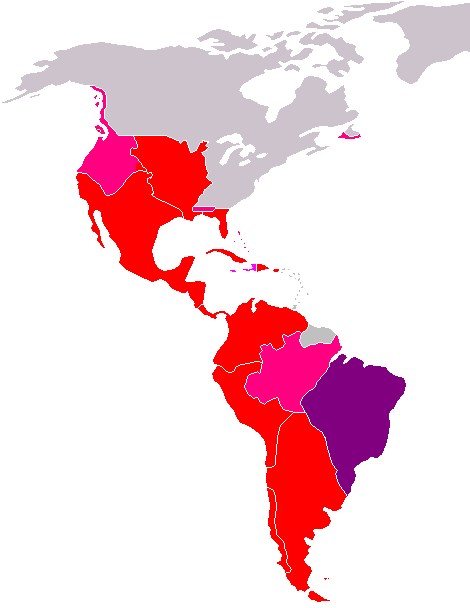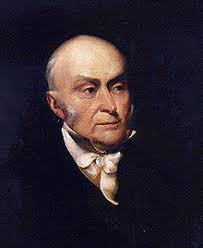CULTURE DURING MEDIEVAL SOCIETY
This reading is adapted slightly from our textbook, "WORLD HISTORY" by Jackson J. Spielvogel, published by Glencoe.
Cathedrals
We know that during the Middle Ages, religion (particularly Christianity) greatly influenced society. Because Christians needed a place to meet for worship, Europe saw a great rise in churches and cathedrals being constructed across the continent. With a rise in church building, the middle ages saw great advancements in ARCHITECTURE-- especially during the eleventh and twelfth centuries.
The cathedrals that were constructed and built during medieval society were built ROMANESQUE style, which meant that they were built in the BASILICA shape used in the construction of church in the late Roman Empire. Basilicas were rectangular buildings that had flat, wooden roofs. Romanesque builders then placed a long, round stone arched vault on top of the wooden roof. Many times the vaults were in the shape of a cross so that the inside of the church could be shaped in that way.
The stone roofs were extremely heavy, which meant that Romanesque churches needed massive pillars and walls to hold them up. This mean that there was very little space left for windows in the church, leaving the insides of churches very dark inside.
A new style of building, called GOTHIC architecture, appeared later in the twelfth century and was developed even further in the thirteenth century. Gothic cathedrals still remain one of the greatest artistic accomplishments of the Middle Ages. There were two major innovations (or accomplishments):
|
INNOVATION
#1:
|
INNOVATION
#2:
|
|
Architects
replaced the round barrel vaults of Romanesque churches with pointed arches…
which allowed builders to make Gothic churches higher than Romanesque
churches
|
The
flying buttress was added to Gothic churches. This was a heavy, arched
support of stone built onto the outside of church walls. Flying buttresses
made it possible to distribute the weight of the church’s ceilings up and
down
|
Gothic cathedrals also had stained glass windows added, which depicted both religious scenes and scenes from daily life. The colored glass also allowed for displays of colored light to enter into the cathedral through sunlight.
 |
| The St. Vitus Cathedral in Prague shows examples of Gothic architecture with the pointed arches extending into the sky. Below, you can see into the Cathedral where stained glass windows are present, paintings are drawn on the walls of the church, and the arches that show where the flying buttresses are located. |

Universities
Universities are a direct product of the Middle Ages. The word university comes from the Latin word universitas which means "corporation."
The first European university appeared in Bologna, Italy. Students (only men) traveled from all over Europe to learn law. Later, the University of Paris became the first university in northern Europe. Many students AND masters (another word for teachers) left the University of Paris to start their own new university at Oxford, England, which is still in existence today. Kings, popes, and princes thought it was very honorable to help found and start universities. By the year 1500, there were more than 80 universities spread all across Europe.
Once students entered a university, they participated in studying a wide variety of topics, including:
-Grammar
-Logic
-Arithmetic
-Geometry
-Music
-Astronomy
One of the most highly valued subjects in universities was THEOLOGY- which is the study of religion and God. Theology was very strongly influenced by a system known as SCHOLASTICISM- which tried to bring together both faith and reason, showing that they can exist together.
One of the most famous men to attempt to bring faith and reason together was Thomas Aquinas.

Thomas Aquinas was a well known Christian author and priest who would ask challenging questions of his readers, such as "Does God really exist?"
Aquinas always questioned the relationship between reason and faith, which was very unheard of for these times. Although his ideas were not always accepted, he is now regarded as one of the most well known theological scholars of the Middle Ages.
Vernacular Literature
In Medieval society, Latin was the common language of civilization. It was used widely in the church and in schools, which later allowed people to communicate almost everywhere in Europe.
By the twelfth century, a new type of literature written in the VERNACULAR was started. Vernacular refers to the language of everyday speech in a particular region (such as Spanish in Spain, English in England, German in Germany, etc.). There were two popular forms of vernacular literature that appeared during the Middle Ages:
|
TROUBADOUR
POETRY
|
CHANSON
DE GESTE (Heroic Epic)
|
|
Mostly
written about nobles and knights… Most poems were about a knight’s love for a
lady, which inspires him to be as brave as possible and also a better poet
|
A
heroic epic tells the story of knights and warriors usually traveling on a
brave and courageous journey. They were very common to read during Medieval
Society.
|
CONCLUSION
Today we learned that culture was very heavily influenced by three themes:
1. Architecture- the appearance of Romanesque and Gothic cathedrals made a huge impact on advancements in Medieval Society, and showed the importance of the church during the middle ages.
2. Universities- Universities were a product of the Middle Ages and influenced studies in Theology, which looked at faith and reason.
3. Vernacular Literature- influenced by the development of individual languages, literature such as poetry and epics increased in popularity during Medieval Society.






